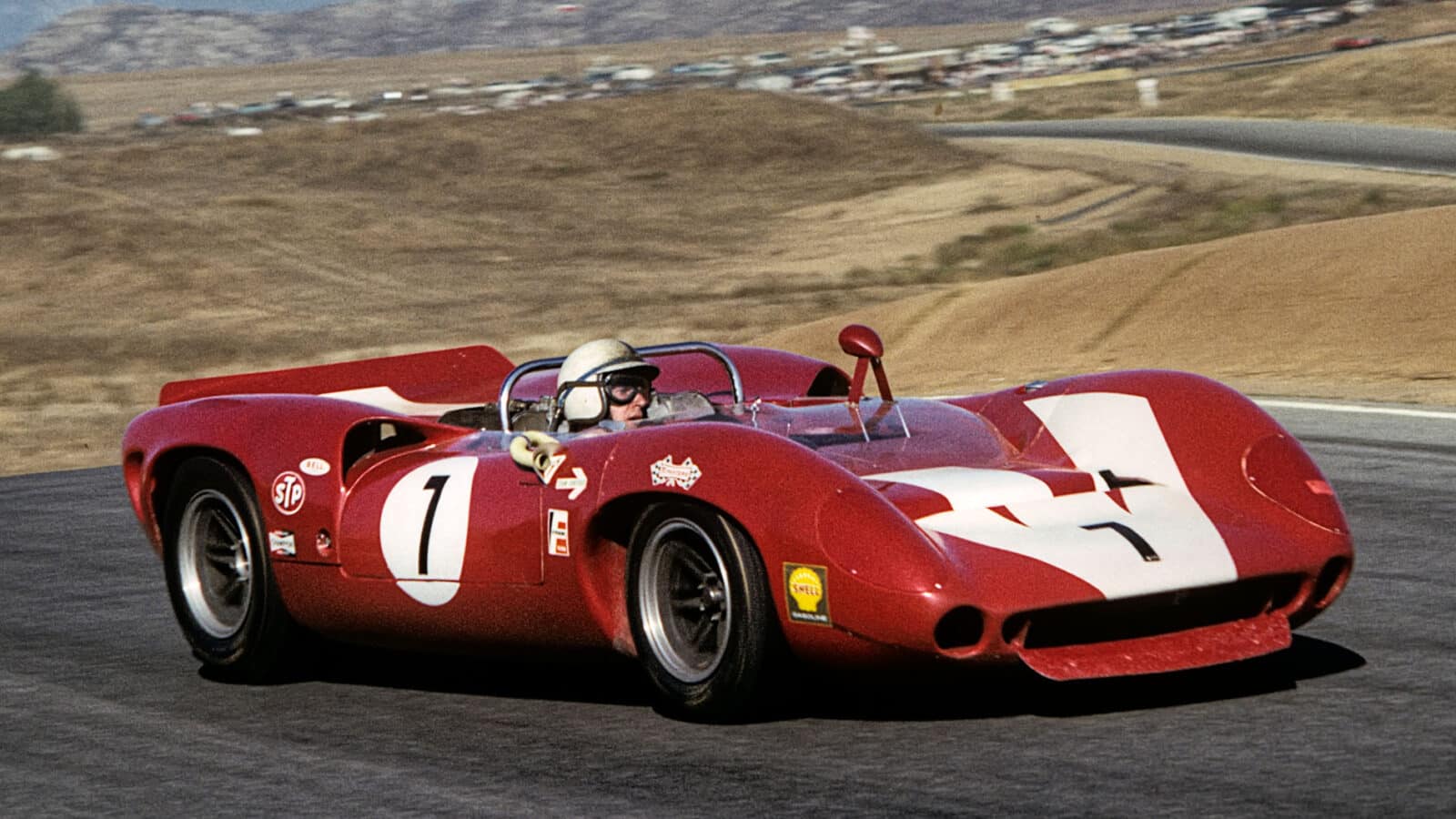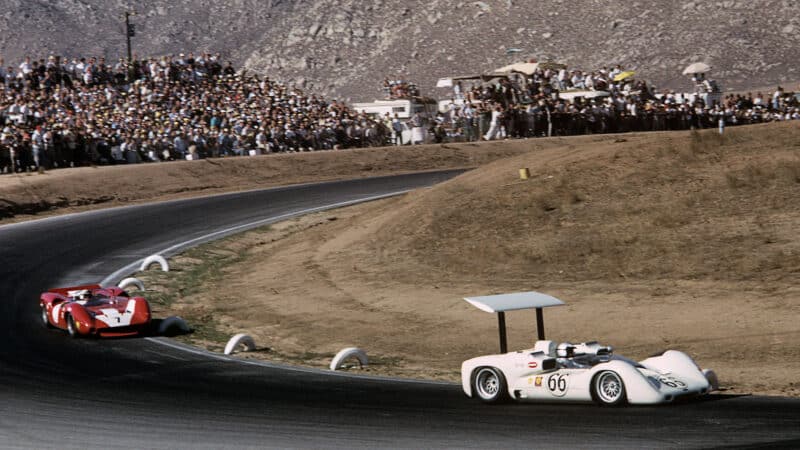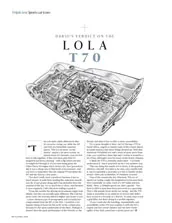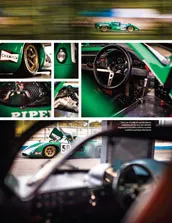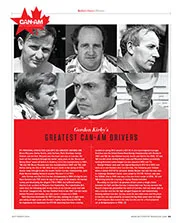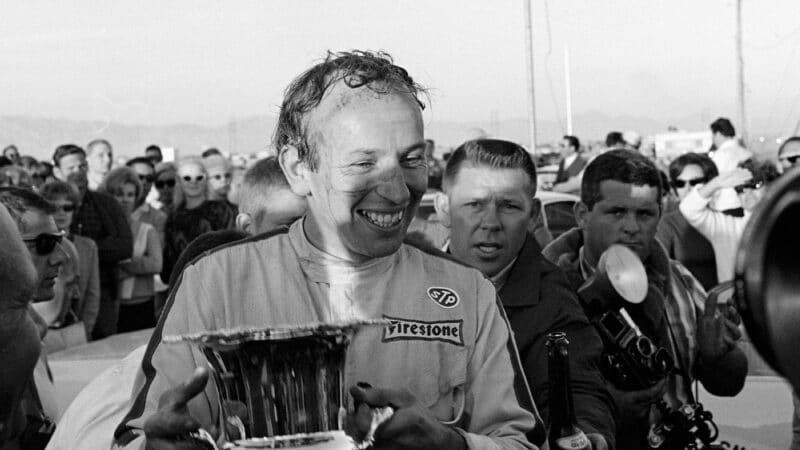It transpired that an experimental front upright, sent to Lola for evaluation, had been fitted to the T70 in error and its disintegration triggered the mishap that ruptured his kidney and smashed his pelvis, among multiple injuries.
“I guess I did Jackie a bit of a favour,” he says with a chuckle. “While recuperating, I felt I should give all my attention to Ferrari when I was fit to drive again. I was due to drive a Bignotti-prepared Lola at Indy in 1966, for instance, but pulled out and suggested they call Graham Hill instead…”
Surtees was fit for the start of the F1 season, at Monaco in May, won in Belgium three weeks later and then famously split with Ferrari following a political row that erupted at Le Mans. He switched to Cooper-Maserati on the F1 front and kept a close eye on the impending Can-Am series, with a six-race schedule running from September to November.

Surtees was in title contention in Las Vegas finale
Getty Images
“Can-Am promised good starting money,” Surtees says, “and we calculated that against our costs. Even as a world champion you weren’t paid fortunes in those days and I’d earn more from Can-Am in 1966 than I had from winning the F1 world title two years earlier. It was a great series with some fantastic circuits and the standard was very high in terms of international competition – but the Americans had developed the formula and they were also very good. It was really enjoyable – the cars were quick and you could really drive them.
“Initially I contacted Traco to build us some 5.9-litre V8s and set up with Malcolm Malone, who worked at Lola. He was happy to drive between events and act as my mechanic, so I bought a Chevy van, which we were to pick up in New York, and shipped the T70 across on a trailer. That was it, the Team Surtees Can-Am challenge, though Malcolm and I had made useful contacts during previous visits and were able to call on some good people to help out during race meetings. There would be some fun post-race parties along the way, but as there were only two of us we didn’t have much time for that.”
